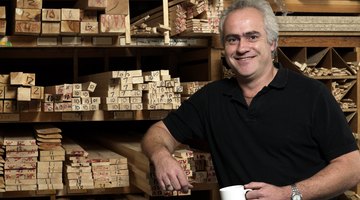What Is Heat Treated Wood?
Heat treating is essentially a form of pasteurization, during which the core temperature of wood is raised to 133 degrees Fahrenheit for 30 minutes. Heat treating is necessary for wood packaging products used in shipping to stop the spread of insects and disease through international trade.

Heat treating regulations are governed by the global standard HT ISPM 15 established by the International Plant Protection Convention for wooden shipping materials.
Regulated Wood
Wood products, such as pallets, boxes, crates, containers, wooden reels, skids or any other solid wood item destined for import or export, must be heat-treated. Particleboard, plywood and oriented strand board are exempt from the standard due to the fact that high temperatures are already used in their manufacture. Each piece of wood used in the packaging, including braces and struts, must be stamped with "HT" meaning "heat treated," or "KD HT" meaning "kiln-dried and heat treated," to comply with the standard. The stamp "HT" is sometimes referred to as the "wheat stamp."
Pests and Species
Heat treating effectively eliminates longhorn beetle, emerald ash borer, pinewood nematode and diseases such as Dutch elm disease. The majority of wood used in packaging is spruce, pine, fir and hemlock. Hardwood species, such as cherry or oak, also require the heat treated stamp. The contemporary trend to go green or recycle has made reclaimed lumber more available. The average woodworker may use heat-treated wood just like any other similar wood not heat-treated or stamped. Heat-treating does not have adverse effects on wood beyond a slight discoloration.
The Drip Cap
- Heat treating is essentially a form of pasteurization, during which the core temperature of wood is raised to 133 degrees Fahrenheit for 30 minutes.
- Particleboard, plywood and oriented strand board are exempt from the standard due to the fact that high temperatures are already used in their manufacture.
References
Writer Bio
Specializing in hardwood furniture, trim carpentry, cabinets, home improvement and architectural millwork, Wade Shaddy has worked in homebuilding since 1972. Shaddy has also worked as a newspaper reporter and writer, and as a contributing writer for Bicycling Magazine. Shaddy began publishing in various magazines in 1992, and published a novel, “Dark Canyon,” in 2008.
Photo Credits
- Michael Blann/Digital Vision/Getty Images
- Michael Blann/Digital Vision/Getty Images
More Articles



